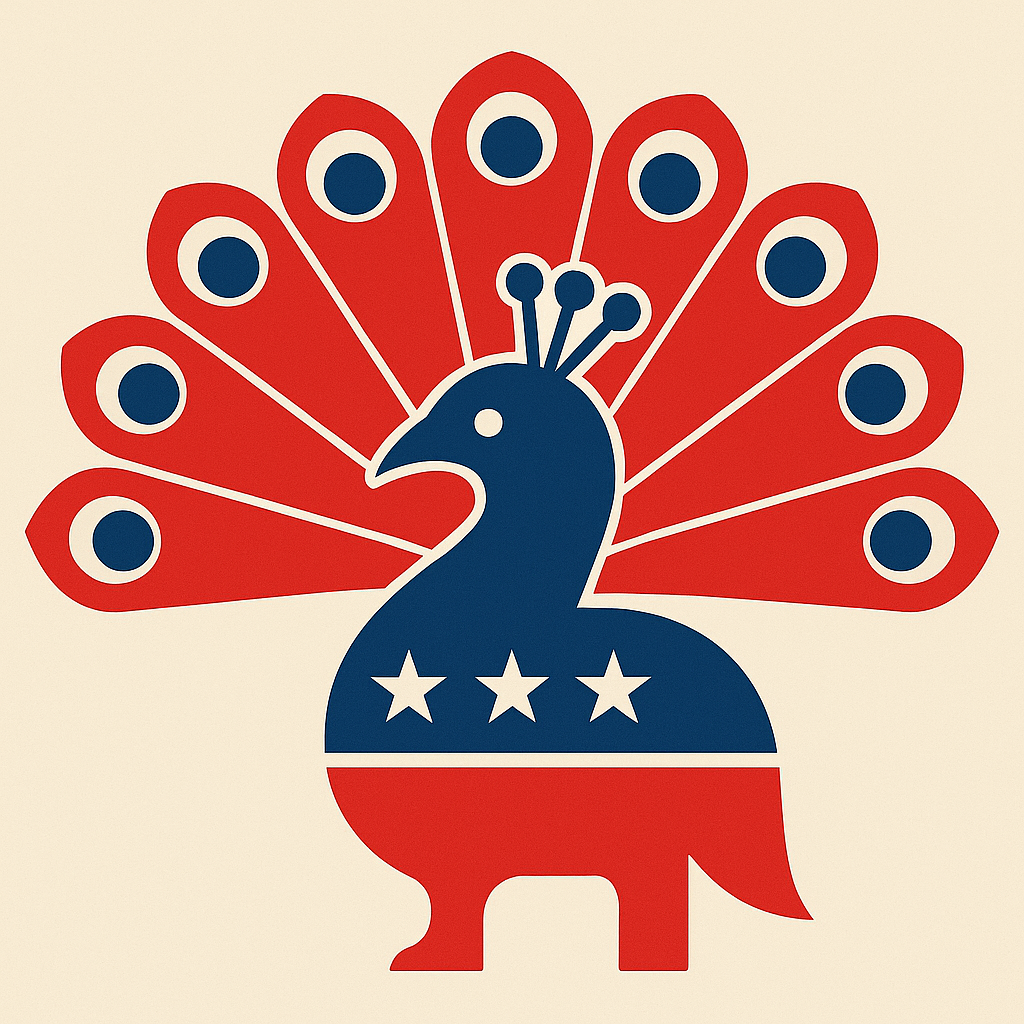Political parties do not collapse all at once. They shrink slowly, quietly, and often with a kind of strange pride. Closed primaries promise purity, but purity behaves like a market with only one kind of buyer and one kind of seller. Over time, the signals inside that closed system become less connected to the real world and more connected to the preferences of a small, insular group. The process mirrors a familiar pattern from nature and economics: the peacock effect.
Most people admire a peacock’s feathers. The display is stunning. Yet the stunning beauty hides a deeper truth. Those elaborate feathers have almost no practical function. They do not help the peacock fly. They do not help the peacock hide. They do not help the peacock survive predators. The feathers serve one purpose: to signal worth to a small group of observers. The display only exists because a small audience finds the display irresistible.
This dynamic has a direct parallel in closed political systems. A shrinking electorate becomes a small audience. Candidates respond to that audience with signals crafted to win its approval. The signals grow brighter, louder, and more elaborate. But they grow less useful for governing a county, a state, or a nation. A closed primary creates a similar evolutionary trap: the selection process rewards the political equivalent of longer feathers and sharper plumage rather than competence, coalition-building, and electability.
Economists call this the peacock effect, or the prestige-signaling spiral. The phenomenon arises whenever a market becomes insular enough for status signals to dominate practical utility. High prices and high credentials crowd out reasonable alternatives. The market becomes exclusive. The spiral accelerates. The product becomes something that only elites can access or understand. Luxury goods operate this way. Elite universities operate this way. High-status neighborhoods operate this way. The rules are the same: fewer buyers, higher displays, and a runaway cycle that excludes nearly everyone who does not play the signaling game.
Closed primaries follow that pattern.
When the primary electorate shrinks, the value of practical usefulness drops, and the value of status signals rises. Candidates do not speak to a broad conservative majority. They speak to the small electorate that decides their fate. They exaggerate positions. They sharpen rhetoric. They perform ideological displays designed for a narrow audience. The feathers lengthen. The colors intensify. The signals become more ornate. And like the peacock’s feathers, they offer little benefit beyond pleasing the audience inside the closed system. The majority necessary to govern voters elsewhere.
A broad primary keeps this spiral in check. A broad electorate rewards practical competence, stability, and broad appeal. The signals must resonate with thousands of voters, not hundreds. A broad primary produces nominees capable of governing a county rather than performing for a faction. An open primary avoids the peacock trap.
A closed primary does the opposite. It squeezes the market until only elite actors can thrive. Wealthy donors, political families, ideological purists, and tightly organized church or activist networks gain disproportionate leverage. Their preferences shape the display. Candidates who cannot afford that performance drop out. Candidates who do not speak in the language of ideological display lose ground. Candidates who appeal to a broad electorate receive little reward inside a narrow one, and their voters drift elsewhere. The party’s majority begins to erode as the elite peacock grows more elaborate while the party base grows smaller.

The spiral grows sharper with each cycle: fewer voters, more elaborate signals, and candidates further removed from the majority that delivers victory in November. Eventually the party becomes a collection of bright feathers and narrow displays, admired by a small circle but unable to sustain the broad coalition required for conservative governance.
The tragedy is that the signals look like strength inside the closed system. They appear bold, pure, and uncompromising. Yet they weaken the party in precisely the way peacock feathers weaken the bird. Peacocks fall to predators because they cannot fly. Closed primaries fall to political competition because their candidates cannot reach the broad electorate beyond the narrow base.
A party that governs a county requires broad support. A party that collapses its electorate to satisfy a small group of insiders is not building strength. It is cultivating decoration. The feathers may impress the insiders, but the voters who decide general elections will not be moved by plumage designed for a smaller audience.
Closed primaries breed peacocks. Open primaries create eagles—leaders who build coalitions instead of performing for elites.
Disclaimer: Parts of this post were drafted with help from ChatGPT, who has strong opinions about peacocks, weak opinions about primaries, and no ability to vote in Tennessee. No artificial intelligences were harmed, plumed, or excessively signaled during the writing of this argument.



Pingback: Why Tennessee Republicans Need Open Primaries: A Working Dog, Not a Show Dog - Warped Minds